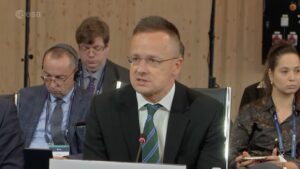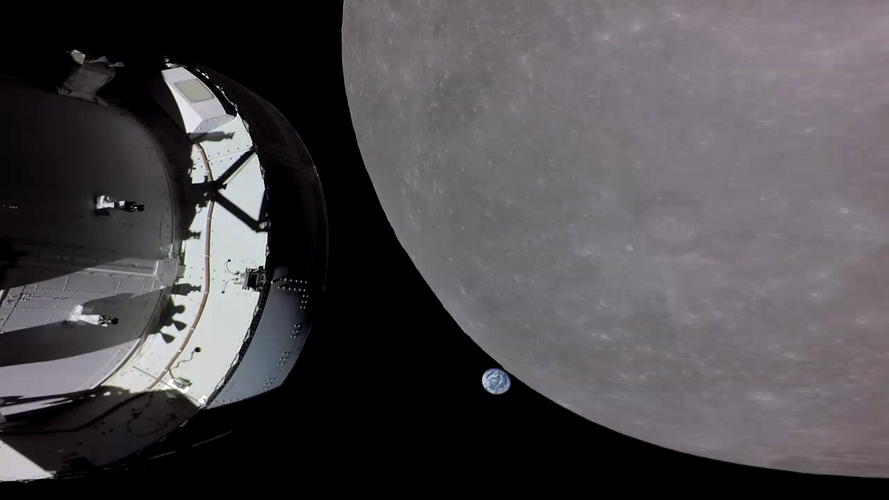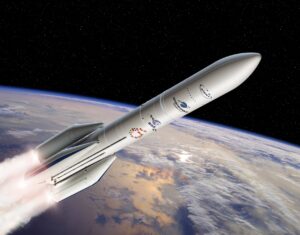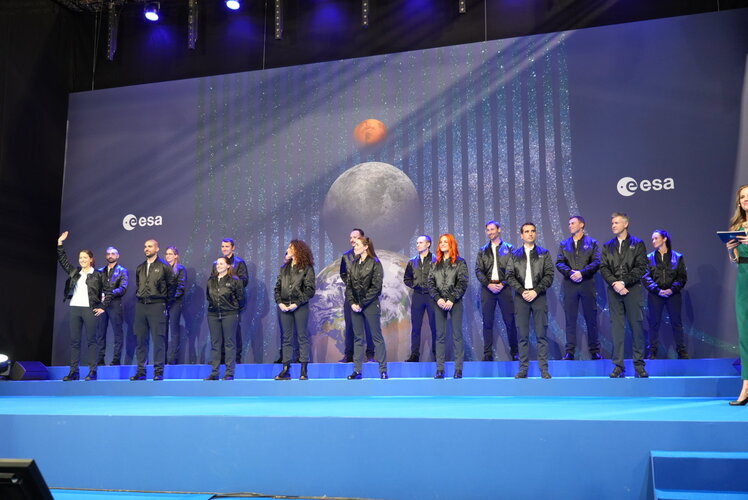Xi: China open to space exchanges, cooperation
Wednesday, 23 November 2022 10:34 President Xi Jinping reiterated on Monday China's wish to work with other nations to carry out space exploration and development. Xi wrote in a congratulatory letter to the United Nations/China 2nd Global Partnership Workshop on Space Exploration and Innovation that the country is willing to deepen its cooperation and exchanges with other nations to advance space exploration and the peaceful use
President Xi Jinping reiterated on Monday China's wish to work with other nations to carry out space exploration and development. Xi wrote in a congratulatory letter to the United Nations/China 2nd Global Partnership Workshop on Space Exploration and Innovation that the country is willing to deepen its cooperation and exchanges with other nations to advance space exploration and the peaceful use Marines Must Fight for Space
Wednesday, 23 November 2022 10:34 Marines must contribute to the fight for space. No, this is not some far-flung future of Colonial or UN Space Command Marines fighting alien hordes. And despite its ongoing force transformation, the Marine Corps is not going to add a space-shuttle door-gunner military occupational specialty any time soon. The most recent "Force Design 2030 Update" argued that "the enduring function for [Stand-In
Marines must contribute to the fight for space. No, this is not some far-flung future of Colonial or UN Space Command Marines fighting alien hordes. And despite its ongoing force transformation, the Marine Corps is not going to add a space-shuttle door-gunner military occupational specialty any time soon. The most recent "Force Design 2030 Update" argued that "the enduring function for [Stand-In An early start to a long weekend - Sols 3660-3664
Wednesday, 23 November 2022 10:34 On a usual week of Curiosity operations, Friday plans take the longest since they span the whole weekend. This rare Monday morning, however, we're planning five sols to start covering Tuesday - Monday of operations so the team can spend Thanksgiving on Earth. When we plan a large chunk of sols like this, the first couple sols are lightweight with minimal risk activities from environmental sensor
On a usual week of Curiosity operations, Friday plans take the longest since they span the whole weekend. This rare Monday morning, however, we're planning five sols to start covering Tuesday - Monday of operations so the team can spend Thanksgiving on Earth. When we plan a large chunk of sols like this, the first couple sols are lightweight with minimal risk activities from environmental sensor 'Sail' to de-orbit would-be space junk
Wednesday, 23 November 2022 10:34 As the number of rocket launches, planetary missions and satellite activities continues to grow, so does junk in space, and many have been pondering the question of how to reduce the amount of debris orbiting Earth. Now, China may have found a solution with its newly deployed "sail" technology.
Hundreds of millions of items of human-made debris are continually circling Earth, including bro
As the number of rocket launches, planetary missions and satellite activities continues to grow, so does junk in space, and many have been pondering the question of how to reduce the amount of debris orbiting Earth. Now, China may have found a solution with its newly deployed "sail" technology.
Hundreds of millions of items of human-made debris are continually circling Earth, including bro Satellite broadband firms join forces
Wednesday, 23 November 2022 10:34 A French and British firm joined forces in the fast-growing satellite broadband market on Tuesday.
French operator Eutelsat said it had signed a merger with British group OneWeb to seal its plan to create a new "champion" in the market.
The pair first announced plans to merge in July when they signed a memorandum of understanding to unite and become "a leading global player in connectivi
A French and British firm joined forces in the fast-growing satellite broadband market on Tuesday.
French operator Eutelsat said it had signed a merger with British group OneWeb to seal its plan to create a new "champion" in the market.
The pair first announced plans to merge in July when they signed a memorandum of understanding to unite and become "a leading global player in connectivi Hungary to spend $100 million on private astronaut mission to ISS
Wednesday, 23 November 2022 08:53
The Hungarian government plans to spend $100 million to send an astronaut to the International Space Station in two years through a deal with Axiom Space.
The post Hungary to spend $100 million on private astronaut mission to ISS appeared first on SpaceNews.
European Space Agency to vote on record budget, name new astronauts
Wednesday, 23 November 2022 08:41
The European Space Agency will vote on Wednesday on whether to spend billions more euros to keep up with rising competition in space, as well as unveiling its much-anticipated new crop of astronauts.
The ESA's 22 member states, whose ministers charged with space duties have been meeting in Paris since Tuesday, will decide on meeting the agency's request for a record 18.7 billion euros for new programs over the next three years.
The figure is more than 25 percent higher than the 14.5 billion euros agreed at the ESA's last ministerial council in 2019.
ESA director-general Josef Aschbacher told AFP that Europe risks "falling out of the race" in space if it does not expand the budget.
Family portrait
Wednesday, 23 November 2022 07:25 Image:
Image:
The Orion spacecraft with European Service Module (left), Earth (middle) and the Moon (right) are captured in this ‘family portrait’ by Orion’s solar array camera during the spacecraft’s closet approach to the lunar surface.
Six days into the 25-day Artemis I mission, the Orion spacecraft performed a key manoeuvre: just a little more than 130 km from the lunar surface, the main engine on the European Service Module – a repurposed Space Shuttle engine that is now on its 20th spaceflight – fired for just under 150 seconds to push the spacecraft and head towards a lunar orbit using
France, Germany and Italy sign agreement on launch vehicle development
Wednesday, 23 November 2022 07:03
An agreement among three European countries could help secure near-term funding for launch vehicle development but have a bigger effect in the long term on how future projects are financed.
The post France, Germany and Italy sign agreement on launch vehicle development appeared first on SpaceNews.
Viasat wins $325 million U.S. Special Operations Command contract
Tuesday, 22 November 2022 22:07
The U.S. Special Operations Command awarded Viasat a $325 million contract to provide communications equipment and networking services over the next five years.
The post Viasat wins $325 million U.S. Special Operations Command contract appeared first on SpaceNews.
Space Force establishes permanent presence in Indo-Pacific region
Tuesday, 22 November 2022 21:07
The Space Force on Nov. 22 formally established a unit within U.S. Indo-Pacific Command.
The post Space Force establishes permanent presence in Indo-Pacific region appeared first on SpaceNews.
The not-quite-tangible reality of Virtual Ground Stations
Tuesday, 22 November 2022 18:23
The satellite communications industry could be just years away from being able to run modems and other ground station hardware in the cloud, although many technical challenges remain to be solved.
The post The not-quite-tangible reality of Virtual Ground Stations appeared first on SpaceNews.
ESA presents new generation of ESA astronauts
Tuesday, 22 November 2022 16:48
The European Space Agency has chosen 17 new astronaut candidates from more than 22 500 applicants from across its Member States. In this new 2022 class of ESA astronauts are five career astronauts, 11 members of an astronaut reserve and one astronaut with a disability.
France, Germany, Italy agree on next-generation space rockets
Tuesday, 22 November 2022 14:01
France, Germany and Italy, the three biggest contributors to the European Space Agency, said Tuesday they have agreed to guarantee the future of the next-generation Ariane 6 and Vega-C rocket launcher systems.
The countries also reaffirmed a preference for European rockets, after the agency was forced to turn to US firm SpaceX to launch two future scientific missions.
The ministers in charge of space for the ESA's 22 member states are meeting in Paris on Tuesday and Wednesday to determine the agency's funding for the next three years, with a 3.2-billion-euro ($3.3-billion) plan for European space launchers high on the agenda.
"The public funding necessary to equilibrate the Ariane 6 and Vega-C institutional and commercial exploitation will be reviewed in order to take into account the evolution of market prices, institutional prices, economic conditions," said a joint ministerial statement from France's Bruno Le Maire, Germany's Robert Habeck and Italy's Adolfo Urso.
The ESA has had to scramble to find a way to get its missions into space after Russia withdrew its Soyuz rockets in response to European sanctions over Moscow's war in Ukraine earlier this year.
Op-ed | Remarkable pivot happening in the national security space business
Tuesday, 22 November 2022 14:00
There is a remarkable pivot that is happening within the national security space business.
The post Op-ed | Remarkable pivot happening in the national security space business appeared first on SpaceNews.

